Read the book The Very Busy Spider by Eric Carle. Encourage adults and children to make the sounds of the animals.Early Literacy Aside--Example: Having your child hear and make the sounds of the animals in this story is one enjoyable way to help develop phonological awareness, to eventually be able to hear the smaller sounds in words. Submitted by Nancy Gattoni, Roanoke County (VA) Public Library
Harry and the Terrible Whatzit by Dick Gackenbach
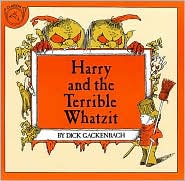
Pete's a Pizza by William Steig

Submitted by Linda White, Washington County (VA) Public Library
Maybe a Bear Ate It by Robie Harris
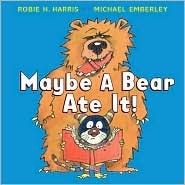
Submitted by Dawn Cheney, Glenvar Branch, Roanoke County (VA) Public Library
Old MacDonald Has a Farm Song
Early Literacy Aside--Explain: Researchers have found that one of the early literacy skills is phonological awareness. This is the ability to hear and play with the smaller sounds in words, like rhyming, playing with syllables or parts of words, and hearing beginning sounds of words. The beginning of this skills starts with children hearing and saying the sounds of animals.Sometime durng storytime sing "Old MacDonald" with the children, including several animals--cow, pig, sheep, chicken, duck, etc. Early Literacy Aside--Example: Making the sounds of animals contributes to phonological awareness and hearing sounds in words. Early Literacy Aside--Empower: Take advantage of opportunities to sing and say the sounds of animals with your children. It's fun and it also helps them hear the smaller sounds in words.
Submitted by Kimberly Burnette-Dean, Roanoke County (VA) Public Library
Snap! by Marcia Vaughan
 Read the book Snap! by Marcia Vaughan.Early Literacy Aside--Example: This book lends itself to retelling events which helps your child understand the story. Encourage your child with questons that leave room for them to describe what they hear or see. I used questions like, "What did Joey do when his Mom fell asleep?" and "Who did he meet?"
Early Literacy Aside--Empower: The ability to retell a story is an important skill for children to have in order to understand what they are reading. Predicting what happens next and acting it out, or as it's usually called, pretend playing, is a fun way to retell a story and to gain background knowldge along the way.
Read the book Snap! by Marcia Vaughan.Early Literacy Aside--Example: This book lends itself to retelling events which helps your child understand the story. Encourage your child with questons that leave room for them to describe what they hear or see. I used questions like, "What did Joey do when his Mom fell asleep?" and "Who did he meet?"
Early Literacy Aside--Empower: The ability to retell a story is an important skill for children to have in order to understand what they are reading. Predicting what happens next and acting it out, or as it's usually called, pretend playing, is a fun way to retell a story and to gain background knowldge along the way.
Submitted by Donna Hackman, Bedford (VA) Public Library and Justin Azevedo, Sacramento (CA) Public Library
The Aminal by Lorna Balian
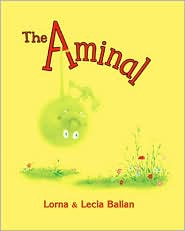
Submitted by Carolyn B. Morehead, Big Island Library, Bedford (VA) Public Library
Blue Goose by Nancy Tafuri
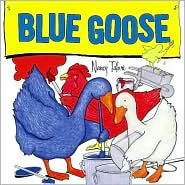
Jazzmatazz! by Stephanie Calmenson
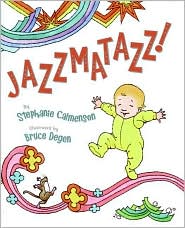
Help! A Story of Friendship by Holly Keller
 Early Literacy Aside--Explain: When you help your children pay attention to the print in books, you are helping to develop their print awareness, one of the early literacy skills that will later help them learn to read. I'll point out a couple of things in storytime today that will support this skill.
Read the story Help! A Story of Friendship by Holly Keller. [When you come to the page with the deep hole, you have to turn the book the long way.] Wow! This hole is so deep we have to turn the book around. Look the writing changed direction too!
Early Literacy Aside--Example: Children's attention often goes to the pictures. By pointing out the direction of print you help develop your children's print awareness.
Early Literacy Aside--Explain: When you help your children pay attention to the print in books, you are helping to develop their print awareness, one of the early literacy skills that will later help them learn to read. I'll point out a couple of things in storytime today that will support this skill.
Read the story Help! A Story of Friendship by Holly Keller. [When you come to the page with the deep hole, you have to turn the book the long way.] Wow! This hole is so deep we have to turn the book around. Look the writing changed direction too!
Early Literacy Aside--Example: Children's attention often goes to the pictures. By pointing out the direction of print you help develop your children's print awareness.
Thank You Bear by Greg Foley
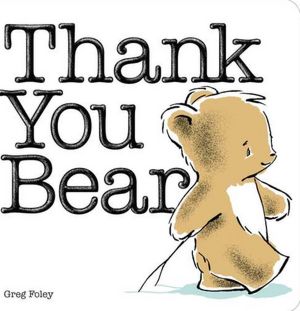
Talk about how what is special to one person might not be special to another. People see things and use things differently.Read the book Thank You Bear by Greg Foley. Activity: Pull out a cardboard box and have the children act out the story. You are the bear. There can be as many monkeys, owls, elephants, etc. as there are children who want to be that animal. Then talk together about the many things you can do with a box. Early LiteracyAside--Example: Acting out stories and having children say parts helps develop their narrative skills, the expressive part of language. Retelling stories is one way that children will later more easily understand what they read. If your child did not get a chance to talk about how they might use a box, listen to their ideas on the way home.
Early Literacy Aside--Empower: Here is a handout for making stick puppets. Using props or puppets is one fun way to encourage children to retell stories at home. It is activities like this that you do with your children that set them on a strong road to reading, in this case helping them understand what they read and how stories work! Puppets: Patterns for making stick puppets. The pattern for the mouse is here, but I use a mouse puppet. The pattern for a bear is also here, but I make myself the bear when I am retelling it with these stick puppets. Thank You Bear stick puppets
My Bonnie Lies Over the Ocean (or other song with repeated sounds)
For any song with repeated sounds. Example: My Bonnie Lies Over the OceanStart out with one sound, say /b/ (buh). Each time you hear a /b/ raise your hands over your head. Sing the song and raise your hands over your head each time you hear the sounds /b/. Then add another sound, say /m/ (mmmm). Each time you hear /m/, tap your knees. Sing the song again doing the motions for both sounds. Early Literacy Aside--Example: Putting motions to the sounds helps some children hear the sounds by emphasizing them. This helps develop phonological awareness, the ability to hear the smaller sounds in words which will later help them sound out words. Words to song: My bonnie lies over the ocean; my bonnie lies over the sea. My bonnie lies over the ocean; so bring back my bonnie to me. Bring back, oh bring back, oh bring back my bonnie to me, to me. Bring back, bring back, oh bring back my bonnie to me.
Rhyme Along with Me
[When you read a rhyming book or say a rhyme, you can pick two rhyming words and then sing this song to emphasize the rhyming words.]To the tune of Row Your Boat: Rhyme, rhyme, rhyme along, rhyme along with me Small and tall are rhyming words [or whatever two words you are rhyming] Now rhyme along with me. Early Literacy Aside--Example: Emphasizing words that rhyme helps children hear the rhyme. Being able to hear the smaller sounds in words helps develop their phonological awareness, a skill that will help them be able to sound out words when they later learn to read.
Pamela Martin-Diaz, Allen County (IN) Public Library
These Words Rhyme
After reading a book that rhymes, I read the book and then come back to a page that have two rhyming words. We talk about the words that rhyme and then sing a song [to the tune of "Skip to My Lou"]Small, tall [or whichever two words you have noted] these words rhyme Small, tall, these words rhyme, Small, tall, these words rhyme, Rhyme along with me. [You can also do this with a nursery rhyme, pointing out two rhyming words.] Early Literacy Aside--Example: Helping your children to recognize and say rhyming words helps them hear the smaller sounds in words, which develops phonological awarness. This is a skill that will later help them sound out words when they learn to read.
Idea from Pamela Martin-Diaz, Allen County (IN) Public Library
Row Your Boat
 During several consecutive storytimes you would choose a song to sing every time. For example, I chose Row Your Boat.In each storytime we sing the song correctly:
Row, row, row your boat; gently down the stream
Merrily, merrily, merrily, merrily; life is but a dream.
Then we sing the song again in a silly way, changing the first sound of each word:
Bow, bow, bow, bour boat, bently, bown be bream
Berrily, berrily, berrily, berrily; bife bis but ba bream.
Then we sing it again correctly.
Early Literacy Aside--Example: Singing nonsense songs like this help children hear the smaller sounds in words, in a fun way! Try it with different songs. Being able to change the first sound in a word is part of phonological awareness.
During several consecutive storytimes you would choose a song to sing every time. For example, I chose Row Your Boat.In each storytime we sing the song correctly:
Row, row, row your boat; gently down the stream
Merrily, merrily, merrily, merrily; life is but a dream.
Then we sing the song again in a silly way, changing the first sound of each word:
Bow, bow, bow, bour boat, bently, bown be bream
Berrily, berrily, berrily, berrily; bife bis but ba bream.
Then we sing it again correctly.
Early Literacy Aside--Example: Singing nonsense songs like this help children hear the smaller sounds in words, in a fun way! Try it with different songs. Being able to change the first sound in a word is part of phonological awareness.
The next week when we sing Row Your Boat changing the first sound of each word to a different sound. For example: Low, low, low lour loat; lently lown le leam Lerrily, lerrily, lerrily, lerrily; life lis lut la leam. Sometimes the children like to make their own changes and sing to the group.
Super Duper 1, 2, 3
 Super Duper 1, 2, 3
Can you say this word (or name) with me?
[volcano--or word/name of your choice]
Say it (You say it)
[Children/adults repeat the word with you]
Clap it (You clap it) (Say it again and clap it)
[Children/adults clap the word with you, one clap per syllable]
Snap it [snap fingers] (Say it again and snap it)
[Children/adults snap fingers together with you, one snap per syllable]
Tap it [tap with foot or tap knees] (Say it again and tap)
[Children/adults tap feet (or knees) with you, one tap per syllable]
Early Literacy Aside–Example: You can do this little song with any word! Dividing words into sound parts, into syllables, helps children hear the smaller sounds in words, one part of phonological awareness, the ability to hear the smaller sounds in words.
Super Duper 1, 2, 3
Can you say this word (or name) with me?
[volcano--or word/name of your choice]
Say it (You say it)
[Children/adults repeat the word with you]
Clap it (You clap it) (Say it again and clap it)
[Children/adults clap the word with you, one clap per syllable]
Snap it [snap fingers] (Say it again and snap it)
[Children/adults snap fingers together with you, one snap per syllable]
Tap it [tap with foot or tap knees] (Say it again and tap)
[Children/adults tap feet (or knees) with you, one tap per syllable]
Early Literacy Aside–Example: You can do this little song with any word! Dividing words into sound parts, into syllables, helps children hear the smaller sounds in words, one part of phonological awareness, the ability to hear the smaller sounds in words.
Where the Wild Things Are by Maurice Sendak
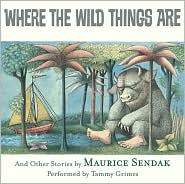
Recess Queen by Alexis O'Neill
 Early Literacy Aside--Explain: One thing you can pass on to your children is an enjoyment of books. Children who enter school enjoying books and reading are more likely to stick with learning to read even if it is difficult. For over half our children, learning to read in school is difficult. I know we have a lot of book-lovers here. In today's storytime, I'll point out some ways to keep your children's attention and keep the booksharing time enjoyable.Book Introduction: I show the cover of the book Recess Queen by Alexis O'Neill and flip through the pages to show my love of a few descriptive illustrations, especially facial expressions that show feelings like”mad and scared.
Early Literacy Aside--Example: Read with your child in a comfortable setting so you may share and talk about the book, including what the pictures are saying. When you take time to talk with your child and listen to what your chld says about the pictures, you are helping to make an enjoyable time with the book, which helps print motivation.
Early Literacy Aside--Explain: One thing you can pass on to your children is an enjoyment of books. Children who enter school enjoying books and reading are more likely to stick with learning to read even if it is difficult. For over half our children, learning to read in school is difficult. I know we have a lot of book-lovers here. In today's storytime, I'll point out some ways to keep your children's attention and keep the booksharing time enjoyable.Book Introduction: I show the cover of the book Recess Queen by Alexis O'Neill and flip through the pages to show my love of a few descriptive illustrations, especially facial expressions that show feelings like”mad and scared.
Early Literacy Aside--Example: Read with your child in a comfortable setting so you may share and talk about the book, including what the pictures are saying. When you take time to talk with your child and listen to what your chld says about the pictures, you are helping to make an enjoyable time with the book, which helps print motivation.
Submitted by Carolyn Lewis, Pamunkey (VA) Regional Library
Who Took the Farmer's Hat? by Joan Nodset
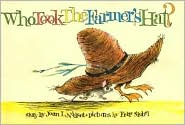
Submitted by Linda Gosnell, Pamunkey (VA) Regional Library
Little Red Hen
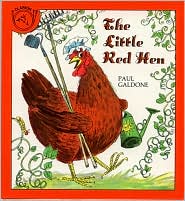
Submitted by Phyllis Arbogast, Blackwater (VA) Regional Library, Carrollton Branch
